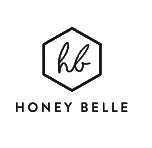CUSTOM DIE-LINES
Think of a Die-line as a roadmap for your packaging. It’s like a precise sketch that shows manufacturers how to cut, fold, and assemble your packaging. Just as an architect’s blueprint brings a building to life, a die-line breathes form and structure into your packaging design.
Imagine trying to build a puzzle without a picture on the box – that’s what packaging without a die-line feels like for manufacturers. A well-crafted die-line is the key to ensuring that your packaging turns out exactly as you envisioned. It prevents errors, reduces waste, and keeps everything on track during production.
When it comes to packaging design, one size definitely does not fit all. Different products require different packaging solutions, and that’s where die-line templates come into play. These templates serve as the foundation, guiding the creation of packaging that not only looks great but also functions flawlessly.
Reading a die-line might seem confusing, but it’s like following a treasure map. We’ll teach you how to understand the lines, folds, and symbols. You’ll be able to see how these markings transform into the actual packaging.
Die-lines are made up of three types of lines:
- Dotted perforation lines
- Cut lines
- Fold lines
When your packaging design goes to be printed, these die-lines guide the machine toward making the proper cuts and perforations so that the package can be folded. Since these two things are separate “chunks” of information that the printer receives, the perforation lines and the cutting lines will appear on different layers and as different colors. This allows the printer to know what to trim and what must be folded separately during the die cutting process.
In addition, safety lines and bleed lines are included to ensure that all artwork does not exceed or “bleed” beyond the cut or fold line. These specific processes don’t happen at one time — rather, the printer takes care of the perforation process in one stage, and the cutting in another.
4.1 The Lines and Folds Your Path to Precision
The foundation of a die-line is its lines – they’re like roads on a map, leading to the final packaging destination. Solid lines indicate where the material will be cut, creating the edges of your packaging. Dotted or dashed lines represent folds, instructing manufacturers on how to bend and shape the material. Think of these lines as your guiding path, ensuring every crease and corner aligns perfectly.
4.2 The Cut Lines Defining the Edges
Solid lines mark where the cutting blade will glide, defining the edges of your packaging. These lines dictate the outline of your design and determine the final shape of the package. Just like tracing the outline of a puzzle piece, cut lines ensure that every element of your packaging fits snugly together.
4.3 The Fold Lines Crafting the Structure
Dotted or dashed lines are the secret sauce of a die-line – they create the folds that transform flat material into a three-dimensional masterpiece. Think of these lines as foldable origami instructions. They guide manufacturers on where to bend, ensuring that your packaging takes shape exactly as intended.
4.4 Glue Tabs the Bond that Holds It All Together
Picture glue tabs as the connectors of your packaging puzzle. These small, rectangular extensions are usually placed near the edges of the die-line. When folded and adhered, they create a sturdy bond, keeping your packaging secure. Glue tabs play a crucial role in maintaining the structural integrity of your design.
4.5 Visualizing the End Result
Once you’ve familiarized yourself with the lines, folds, and panels, step back and visualize the end result. Imagine the flat die-line transforming into a fully formed package. Picture how the folds come together, where the glue tabs secure the structure, and how the cut lines define the edges. This mental visualization will give you a clear understanding of how your packaging will take shape.
4.6 Double-Checking for Accuracy
Just as you’d double-check your coordinates on a map, it’s essential to review your die-line for accuracy. Ensure that all lines are properly aligned, that the panels are correctly labeled, and that the dimensions match your intended design. A well-constructed die-line is the key to a successful packaging production process.
By learning how to read a die-line, you’re equipped with the skills to communicate your packaging vision effectively to manufacturers. Think of it as mastering a new language – one that bridges the gap between your creative imagination and the tangible reality of packaging design.
Die-lines are usually created by the packaging designers. They can also be created with die cutters or a printer. Die-lines are used in many types of packaging, not just boxes. From simple folders with pockets to complex packaging, die-lines make it possible to cut and fold to create the final product.
Fast Shipping
Competetive Prices
Fast Turnaround
Low Minimums
Mock Up Samples
People Who Love Our Products
Bose, Yummi Karma, and hundreds of other business clients in all major industries have benefited from our high-quality packaging. Be sure to check out their testimonials above!







